#TMAstrong
Explore tagged Tumblr posts
Photo
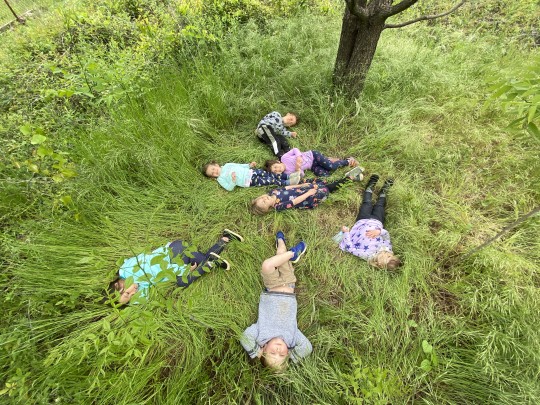



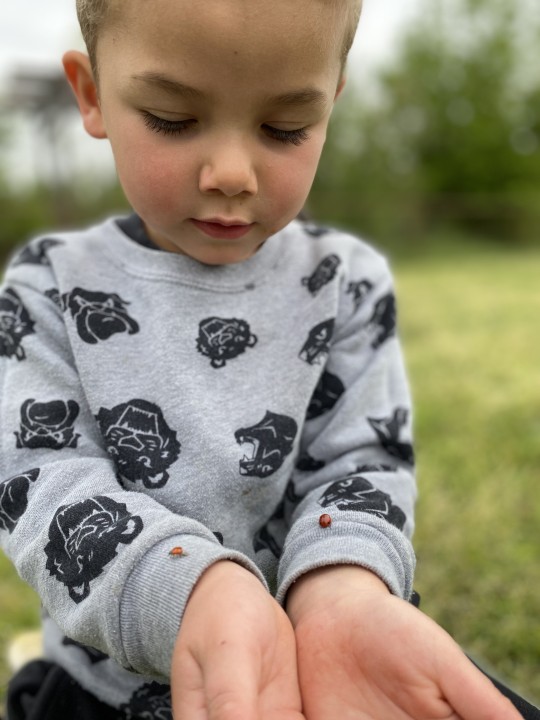

Earth Day in Early Childhood
“There is no description, no image in any book that is capable of replacing the sight of real trees, and all the life to be found around them, in a real forest. Something emanates from those trees which speaks to the soul, something no book, no museum is capable of giving.”
-- Maria Montessori
#pictures from Earth Day#get outdoors#listen to nature#learn from nature#intrinsic motivation#hands on learning#TMAstrong#tma#montessori#private school#arlingtontx#arlington#texas#infant#nido#toddler#early childhood#kindergarten#elementary#education#private education#nontraditional#the montessori academy of arlington
36 notes
·
View notes
Photo
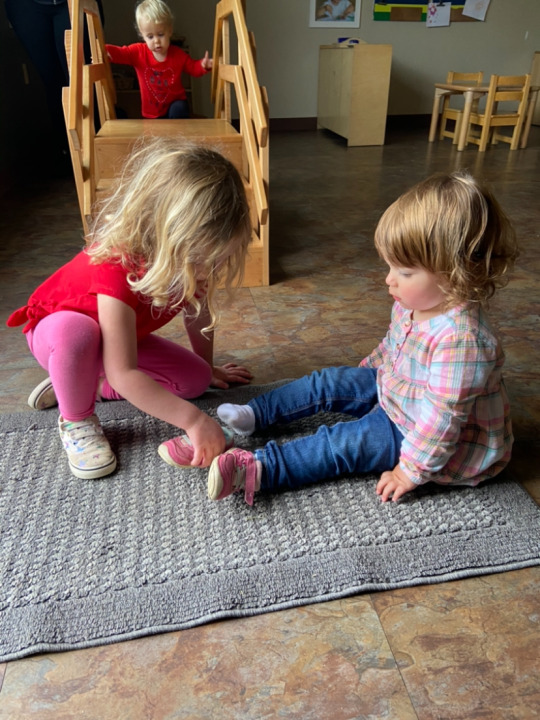
Toddler - Collaborative Learning
This student is helping her friend put on her shoe. She was a willing participant in this interaction between a young toddler and an older toddler. These kinds of interactions are important for children to experience as it teaches positive social skills.
#helping others#interdependence#leader#mentor#always learning#social skills#practical life#purposeful activity#whole child#TMAstrong#tma#montessori#private school#arlingtontx#arlington#texas#infant#nido#toddler#early childhood#preschool#kindergarten#elementary#education#nontraditional#the montessori academy of arlington
17 notes
·
View notes
Photo
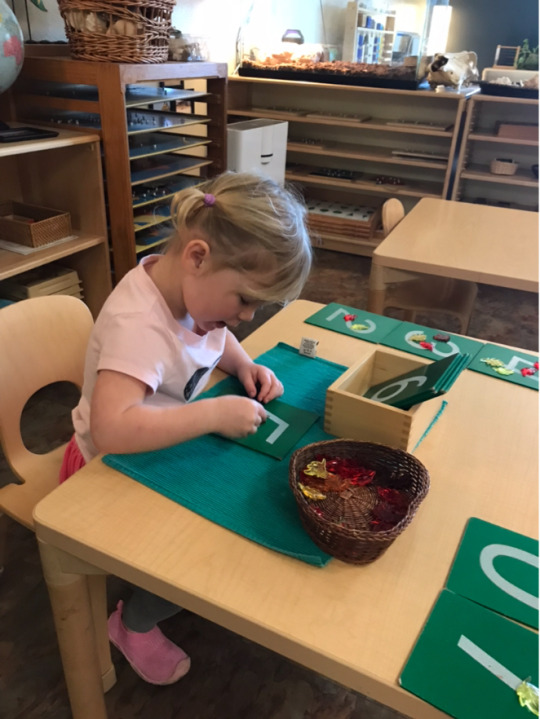
Early Childhood - Sandpaper Numbers
Look at that focus! The Sandpaper Numbers are an important foundational Montessori math material. The material is comprised of 10 green boards, each displaying a number, 0-9, cut from fine-grit sandpaper on the front. The direct purpose is to teach children the symbols that represent each number, allowing them to visually identify these numbers. The numbers are tactile, inviting the child to touch and experiment, helping to prepare them to write numbers in future lessons.
#tactile#hands on learning#experiential learning#recognizing numbers#focus#concentration#math is fun#order#coordination#independence#TMAstrong#montessori#private school#arlingtontx#arlington#texas#infant#nido#toddler#early childhood#preschool#kindergarten#elementary#education#private education#nontraditional#the montessori academy of arlington
5 notes
·
View notes
Video
tumblr
Infant - Practical Life - Care of Environment & Self
Mealtime is a favorite activity for children, complete with a routine followed every time. After each meal, children are encouraged to restore the environment by putting their dirty dishes in the nearby bucket as soon as they’re able to stand. We role model this until they are mobile so they become familiar with the routine.
This student cleans up by putting her bowl and cup in the bucket. She then goes to the restroom to wash her hands and face to finish the process. This allows the children to be a part of the community by contributing to keeping the shared environment clean and teaches independence and responsibility early on. The chance to wash their hands gives them a chance to practice caring for themselves independently.
#practical life skills#restoring the environment#care of self#care of environment#independence#order#concentration#coordination#capable#TMAstrong#tma#montessori#private school#arlingtontx#arlington#texas#infant#nido#toddler#early childhood#preschool#kindergarten#elementary#education#private education#nontraditional#the montessori academy of arlington
7 notes
·
View notes
Photo
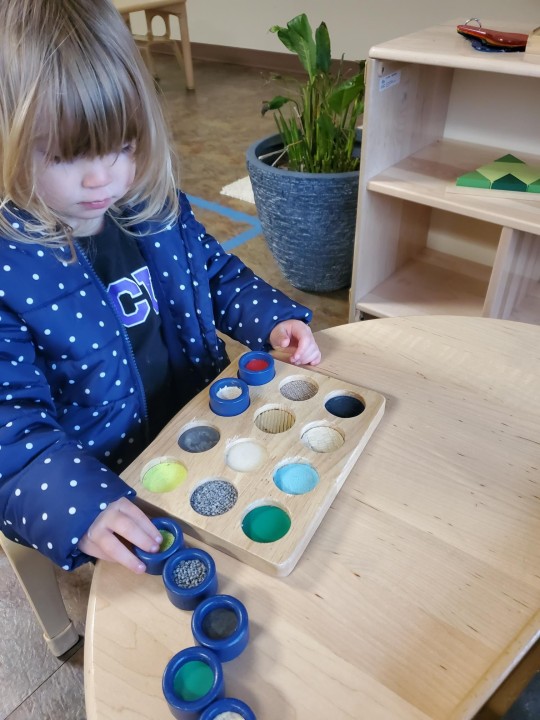
Toddler - Sensorial Touch Board
The Sensorial Touch Board allows for sensory exploration and refinement. The child is invited to use their sense of touch and sight to differentiate between the textured, rough, or smooth surfaces and make a match.
#sensorial#hands on learning#sensory exploration#sense of touch#always learning#TMAstrong#tma#montessori#private school#arlingontx#arlington#texas#infant#nido#toddler#early childhood#preschool#kindergarten#elementary#education#nontraditional#the montessori academy of arlington
10 notes
·
View notes
Photo


Early Childhood - Plant Polishing
Through the process of first receiving a presentation on a lesson, to unrolling the mat, to fetching the plant, to spraying the leaves, to polishing the leaf one at a time, to restoring the work, the child is learning the importance of a process.
In the Montessori environment when a child polishes or cleans up a mess, they are doing so to internalize the process. The shiny, clean leaf is beautiful because it was made by a child who put all of his effort into polishing in the way that felt best to him. The purpose of the activity is not to ensure that there are plenty of beautiful polished leaves all over the room. The purpose is that the child is developing focus, fine motor skills, a sense of order, and that they are going through a process. They are satisfied by the act, the product itself is almost an afterthought to the child. Focus, motor skills, order, and process are not tangible items. Therefore, it becomes very easy to ignore it and focus on the polished leaf instead. In our environment, we instead honor the child’s effort and concentration.
#focus#fine motor skills#concentration#coordination#independence#process#TMAstrong#tma#montessori#private school#arlingtontx#arlington#texas#infant#nido#toddler#early childhood#preschool#kindergarten#elementary#education#nontraditional#the montessori academy of arlington
4 notes
·
View notes
Photo

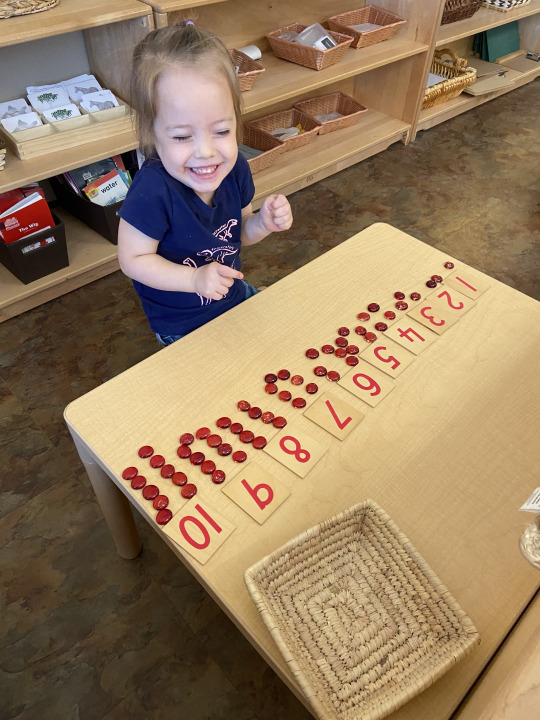
Early Childhood - Math: Cards and Counters
Look at that focus and concentration during her work and the joy and pride once completed!
Cards and Counters is a Montessori math activity that introduces the child to the units of quantity. This is to reinforce the sequence in numbers (one to ten) and provide a visual experience of quantity.
#joyful learning#pride#concentration#hands on learning#experiential learning#math is fun#concrete to abstract#TMAstrong#tma#montessori#private school#arlingtontx#arlington#texas#infant#nido#toddler#early childhood#preschool#kindergarten#elementary#education#private education#nontraditional#the montessori academy of arlington
13 notes
·
View notes
Photo
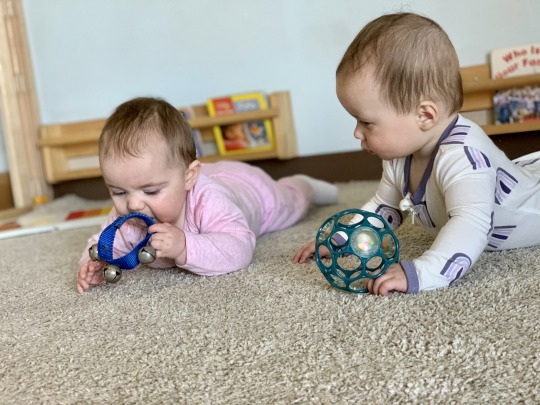
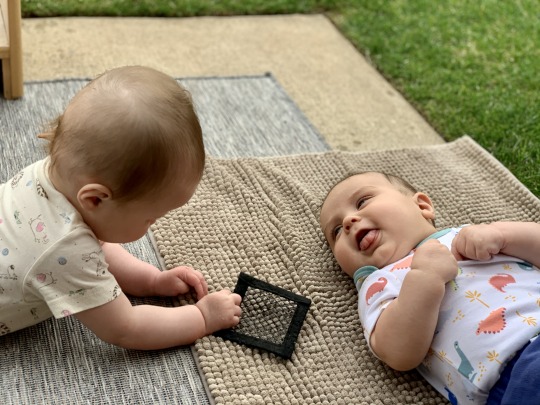
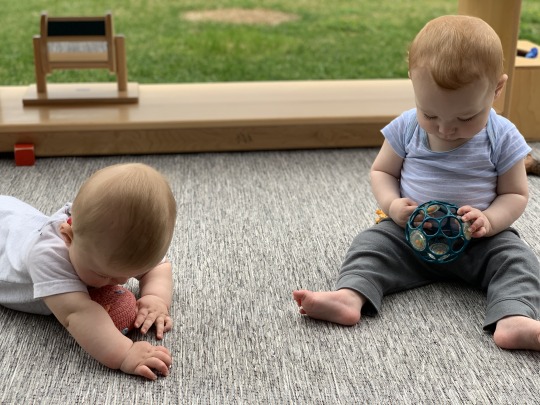
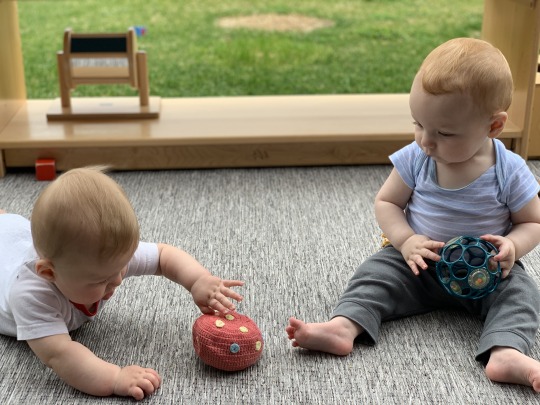

Infant - Parallel Play
In between social interactions, infants often participate in parallel play in the classroom. As they both work independently, they observe each other and learn from the other’s movements. Parallel play is a common occurrence in the infant classroom and more social than it seems. They learn how to work on their own while still cooperating in their community and respecting others’ space.
#parallel play#always learning#hands on learning#experiential learning#confident learner#competent learner#infants learning#TMAstrong#tma#montessori#private school#arlingtontx#arlington#texas#infant#nido#toddler#early childhood#preschool#kindergarten#elementary#education#private education#nontraditional#the montessori academy of arlington
10 notes
·
View notes
Photo
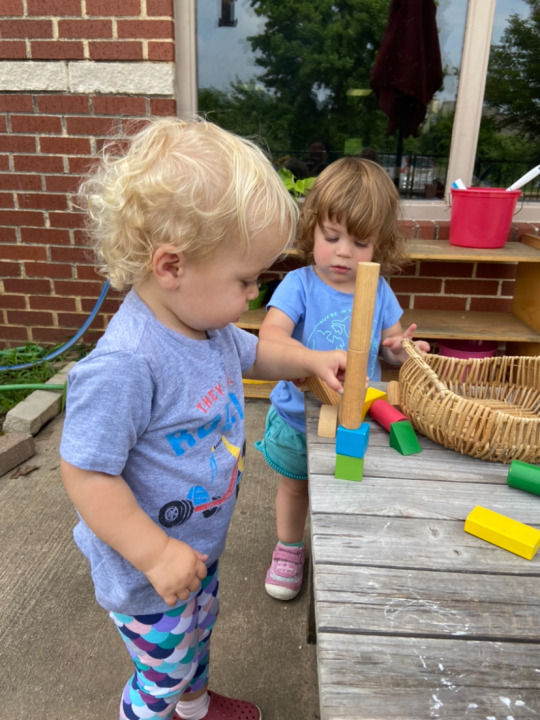
Toddler - Building with Blocks
Children begin the building process by stacking and building upward. Later, this turns into building out and creating structures. Building and balancing blocks develops concentration, coordination, and control of gross motor skills.
#coordination#concentration#gross motor skills#independence#confident learner#competent learner#hands on learning#experiential learning#TMAstrong#tma#montessori#private school#arlingtontx#arlington#texas#infant#nido#toddler#early childhood#preschool#kindergarten#elementary#education#nontraditional#the montessori academy of arlingtont
4 notes
·
View notes
Photo


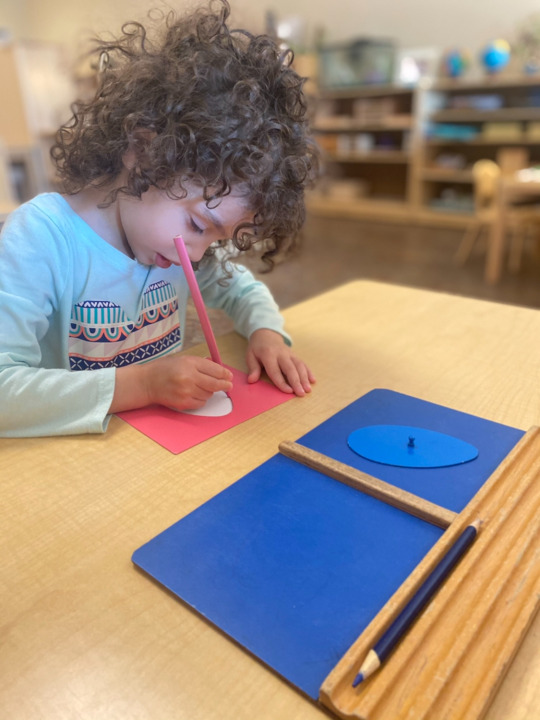
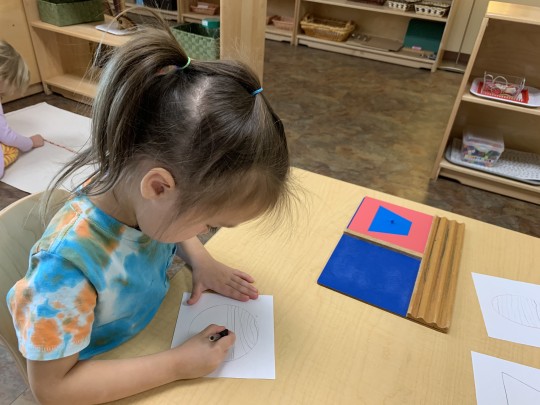

Early Childhood - Metal Insets
The Metal Insets are a delightful way for a child to prepare for writing.
How does this material aid a child on their way to writing? Holding a pencil to carefully trace shapes helps a child develop the fine motor control needed to write small letters. Creating patterns and designs is a secondary goal, but also increases a child’s ability to manipulate a pencil.
Perhaps most importantly, this work has many variations and possibilities, and can capture any child’s interest for an extended period of time.
During this activity, a natural control of error occurs when a child draws outside of the line. He or she can independently understand, without the word of a teacher, if they’ve accomplished filling the shape in ‘inside the lines.'
#focus#concentration#independence#fine motor skills#pencil control#preparation for writing#hands on learning#always learning#TMAstrong#tma#montessori#private school#arlingtontx#arlington#texas#infant#nido#toddler#early childhood#preschool#kindergarten#elementary#education#nontraditional#the montessori academy of arlington
8 notes
·
View notes
Photo

Toddler - Wet Pouring
Look at that focus! Water Pouring is a material from the Practical Life area of the classroom, and is also sometimes referred to as Wet Pouring. The Practical Life materials help a child independently and confidently perform daily tasks that he or she might find at home.
This activity serves multiple purposes, just like most materials in the Montessori classroom. Firstly, children are inherently attracted to water activities. They love the process of pouring, washing, and transferring water. A child’s concentration may be engaged for long periods of time, simply by pouring liquid from one container to another, and back again.
Their fine motor skills are refined as they carefully manipulate the vessel. They mustn’t pour too fast, or the water will spill. They need to tip it just enough to start the flow of water. It’s a delicate balance, but once achieved, children love this activity!
#fine motor skills#focus#order#concentration#coordination#independence#purposeful activity#hands on learning#practical life#love of learning#intrinsic motivation#TMAstrong#tma#montessori#private school#arlingtontx#arlington#texas#infant#nido#toddler#early childhood#prechool#kindergarten#elementary#education#private education#nontraditional#the montessori academy of arlington
2 notes
·
View notes
Photo

Early Childhood - Red Rods
The Red Rods help a child visually discriminate differences in length, from 10cm to 100cm. The material is displayed on a shelf, in order, from shortest to longest. A child carefully takes all the pieces, one by one, and places them randomly on a floor mat. The child can then place them back in order, appreciating the different lengths.
To ensure they are in the right order, the child moves the smallest 10cm piece to the right of the next longest piece. If those 2 pieces are aligned with the piece above it, the child knows it’s in the right spot! This visual affirmation means the child doesn’t need confirmation from a parent or teacher, but rather is in charge of his or her own learning.
The final step is to return the Red Rods to the shelf, placing them in order as they found them so it is ready for another student to use.
#concrete to abstract#red rods#math is fun#visual discrimination of length#self-correcting#order#concentration#coordination#independence#hands on learning#experiential learning#purposeful activity#TMAstrong#tma#montessori#private school#arlingtontx#arlington#texas#infant#nido#toddler#early childhood#preschool#kindergarten#elementary#education#nontraditional#the montessori academy of arlington
2 notes
·
View notes
Photo

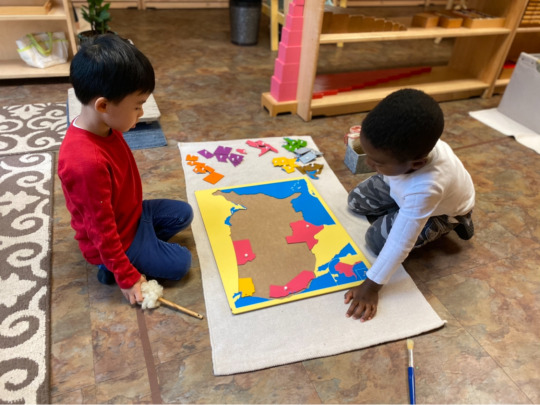


Early Childhood - Puzzle Maps
Puzzle maps are the child’s introduction to the world we live in. Starting with the map of the world and progressing through continents and then countries, the puzzle maps showcase the difference between land and water, and help to develop an appreciation for spatial awareness.
#geography#spatial awareness#land and water#continents#countries#hands on learning#experiential learning#understanding the world#TMAstrong#tma#montessori#private school#arlingtontx#arlington#texas#infant#nido#toddler#early childhood#preschool#kindergarten#elementary#education#nontraditional#the montessori academy of arlington
4 notes
·
View notes
Photo
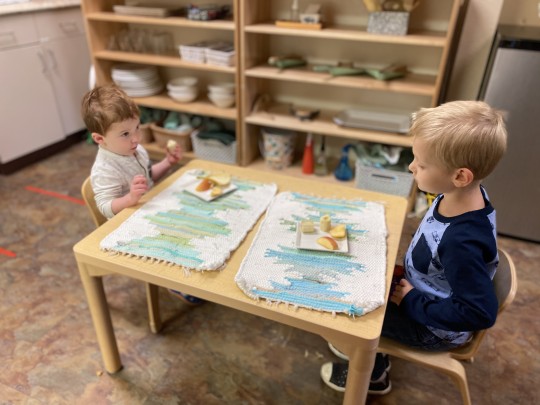

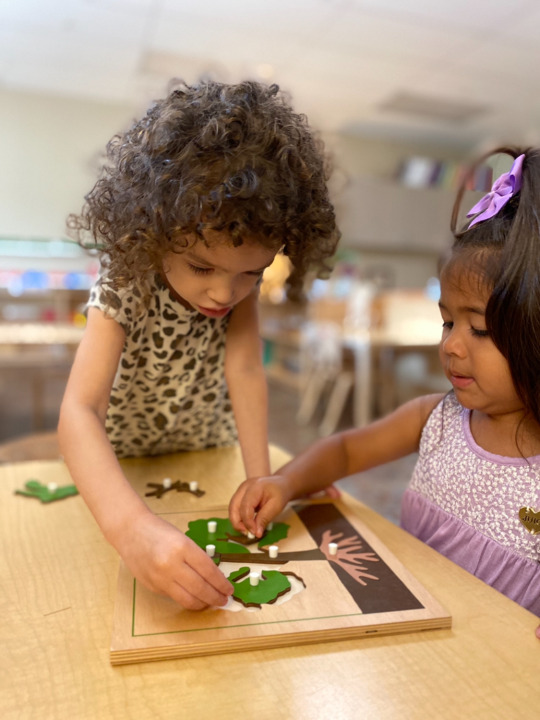
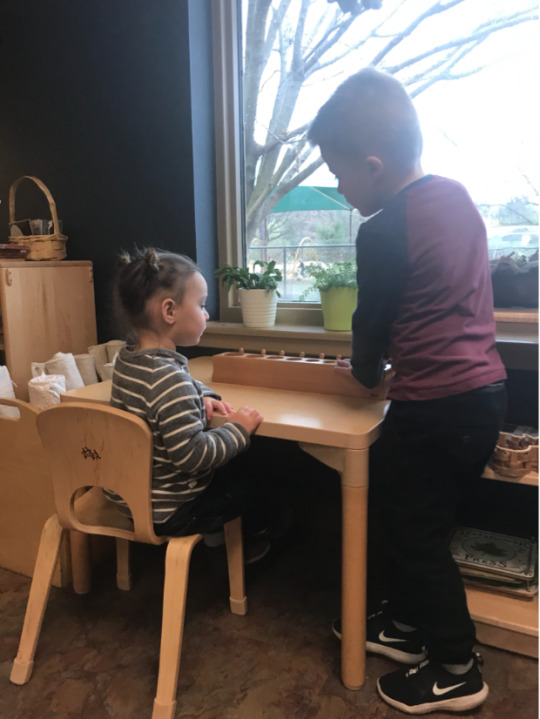
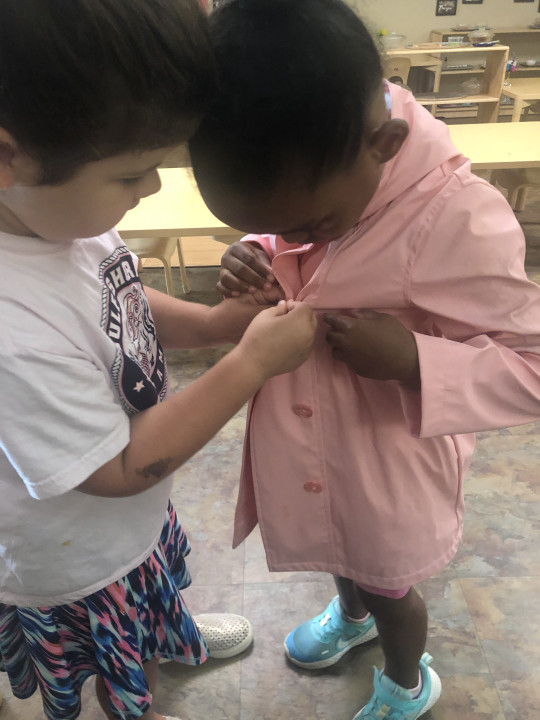
Early Childhood - Multi-Age Classrooms
Montessori classrooms foster life-long leadership skills. In each mixed age classroom, the older students have the opportunity to become mentors to the younger students. These mentors help to teach their mentees concepts and ideas that are more advanced. The mentors are also there to answer any questions that their younger mentees might have. This form of peer-to-peer learning is beneficial to the mentor and the mentee, as both of them gain skills by collaborating with one another. Teaching the younger students helps the older students reinforce their own knowledge base, while the younger students benefit from having a mentor who is readily available to help them.
According to Dr. Maria Montessori, as children pass through the planes of development, they begin to develop certain attributes and needs. Each period of transformation is taken into consideration in the Montessori classroom, where children are grouped according to their plane of development to maximize the child’s learning.
Additionally, having the opportunity to interact with other children, who are either younger or older, can help a child develop important social skills. Oftentimes, younger children are intimidated by older children simply because they have not interacted with them before. However, in a Montessori classroom, as students of different ages interact with each other on a daily basis, they become more comfortable playing and learning with older children. Furthermore, by being around children of different ages, they are exposed to three or more levels of all subjects at all times. This constant cognitive stimulation sparks a greater and more organic interest in learning.
#leadership#learn from peers#social skills#cognitive stimulation#independence#intrinsic motivation#mentor#mixed age classroom#TMAstrong#tma#montessori#private school#arlington tx#arlington#texas#infant#nido#toddler#early childhood#preschool#kindergarten#elementary#education#private education#nontraditional#the montessori academy of arlington
11 notes
·
View notes
Photo

Toddler - Reading Aloud & Sharing Stories
It's never too early to start developing early literacy skills! Not only can reading aloud and sharing stories help your child become familiar with sounds, words, and language, it helps your child's brain develop by expanding the ability to concentrate and focus, and learning social and communication skills.
#early literacy#read aloud#brain development#listening skills#social skills#communication skills#TMAstrong#tma#montessori#private school#arlingtontx#arlington#texas#infant#nido#toddler#early childhood#preschool#kindergarten#elementary#education#nontraditional#the montessori academy of arlington
2 notes
·
View notes
Photo

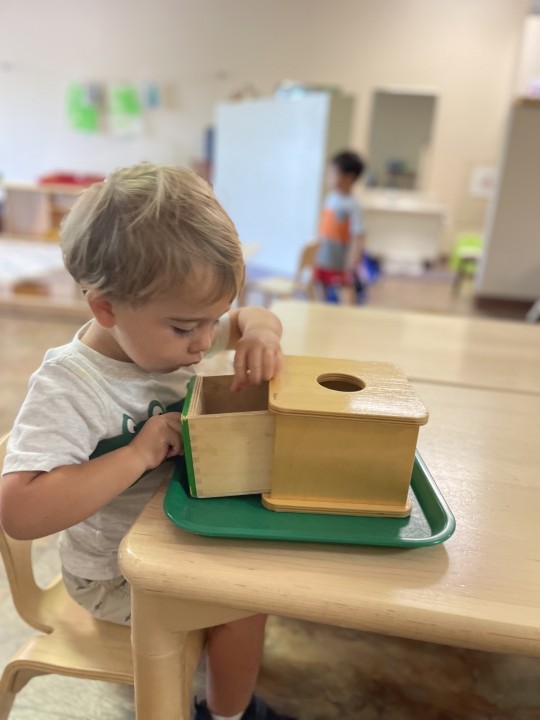
Toddler - Imbucare
Imbucare, an Italian word which means "to put inside," was used by Maria Montessori to label works with that action in mind. These works foster hand-eye coordination and concentration, refine fine motor skills, and help children learn about spatial relationships.
Dr. Montessori observed that children are so focused on placing a variety of objects into holes that it takes up much of their focus and concentration. A child's pincer grasp, which is used for writing, is refined when he uses the knob on the drawer to retrieve the ball before starting the process all over again.
#fine motor skills#spatial relationships#hand eye coordination#order#concentration#coordination#independence#hands on learning#experiential learning#purposeful activity#always learning#TMAstrong#tma#montessori#private school#arlington tx#arlington#texas#infant#nido#toddler#early childhood#preschool#kindergarten#elementary#education#private education#nontraditional#the montessori academy of arlington
2 notes
·
View notes